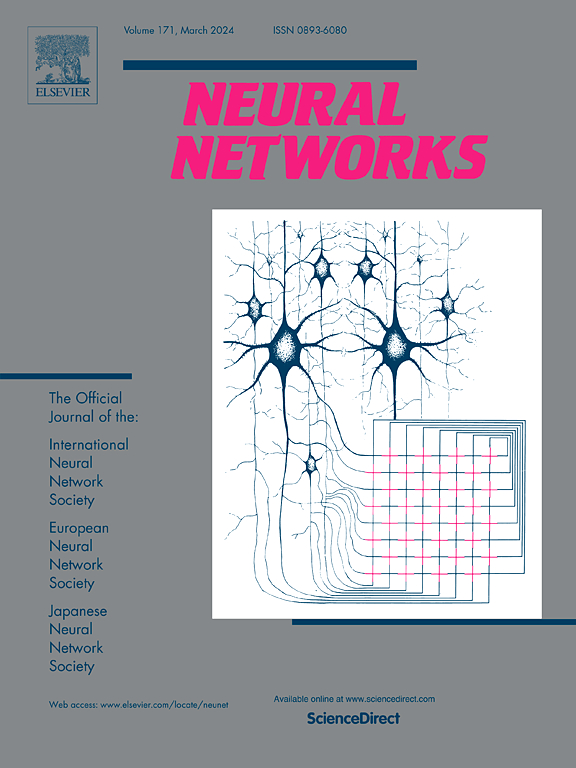DiffCNN:一种用于半监督医学图像分割的扩散模型和CNN协同框架
IF 6.3
1区 计算机科学
Q1 COMPUTER SCIENCE, ARTIFICIAL INTELLIGENCE
引用次数: 0
摘要
师生架构在半监督医学图像分割中取得了巨大的成功。尽管具有优异的性能,但该架构仍然面临两个挑战:1)教师子网的优化严重依赖于学生子网,这极大地限制了教师子网的能力;2)常用的基于cnn的师生子网构建结构不能很好地处理有噪声的医学图像。为了解决这些挑战,我们提出了DiffCNN,这是一种用于半监督医学图像分割的扩散模型和CNN的协作框架。与使用相同结构的两个子网的经典方法不同,我们提出的DiffCNN使用了两个结构完全不同的子网。具体来说,DiffCNN除了采用CNN子网外,还采用了扩散子网,通过学习掩码的底层分布来减轻噪声的影响。扩散子网和CNN子网的协同训练使得两个子网可以相互学习,从而更有效地从输入图像中提取互补信息。此外,通过强制基于扩散的分割访问真实掩码,涉及对抗学习以进一步增强扩散子网的能力。我们在三个数据集上评估了所提出的DiffCNN的性能,结果表明DiffCNN优于最先进的半监督分割方法。本文章由计算机程序翻译,如有差异,请以英文原文为准。
DiffCNN: A collaborative framework of diffusion model and CNN for semi-supervised medical image segmentation
The highly prevalent teacher-student architecture has demonstrated great success in semi-supervised medical image segmentation. Despite its excellent performance, the architecture still faces two challenges: 1) the optimization of the teacher subnet relies heavily on the student subnet, and this greatly limits the capability of the teacher subnet; 2) the commonly used CNN-based structure for the construction of the teacher and student subnets cannot deal well with noisy medical images. To address these challenges, we propose DiffCNN, a collaborative framework of diffusion model and CNN for semi-supervised medical image segmentation. Unlike classic approaches that use two subnets of the same structure, our proposed DiffCNN employs two subnets of quite different structures. Specifically, in addition to a CNN subnet, DiffCNN also employs a diffusion subnet to alleviate the influences of noises through learning the underlying distribution of the mask. Collaborative training of the diffusion and CNN subnets makes it possible for the two subnets to learn from each other and accordingly extract complementary information from the input images more effectively. Furthermore, adversarial learning is involved to further enhance the capability of the diffusion subnet through forcing the diffusion-based segmentations to access real masks. We evaluate the performance of the proposed DiffCNN on three datasets, and the results demonstrate the superior performance of the DiffCNN over the state-of-the-art semi-supervised segmentation methods.
求助全文
通过发布文献求助,成功后即可免费获取论文全文。
去求助
来源期刊

Neural Networks
工程技术-计算机:人工智能
CiteScore
13.90
自引率
7.70%
发文量
425
审稿时长
67 days
期刊介绍:
Neural Networks is a platform that aims to foster an international community of scholars and practitioners interested in neural networks, deep learning, and other approaches to artificial intelligence and machine learning. Our journal invites submissions covering various aspects of neural networks research, from computational neuroscience and cognitive modeling to mathematical analyses and engineering applications. By providing a forum for interdisciplinary discussions between biology and technology, we aim to encourage the development of biologically-inspired artificial intelligence.
 求助内容:
求助内容: 应助结果提醒方式:
应助结果提醒方式:


